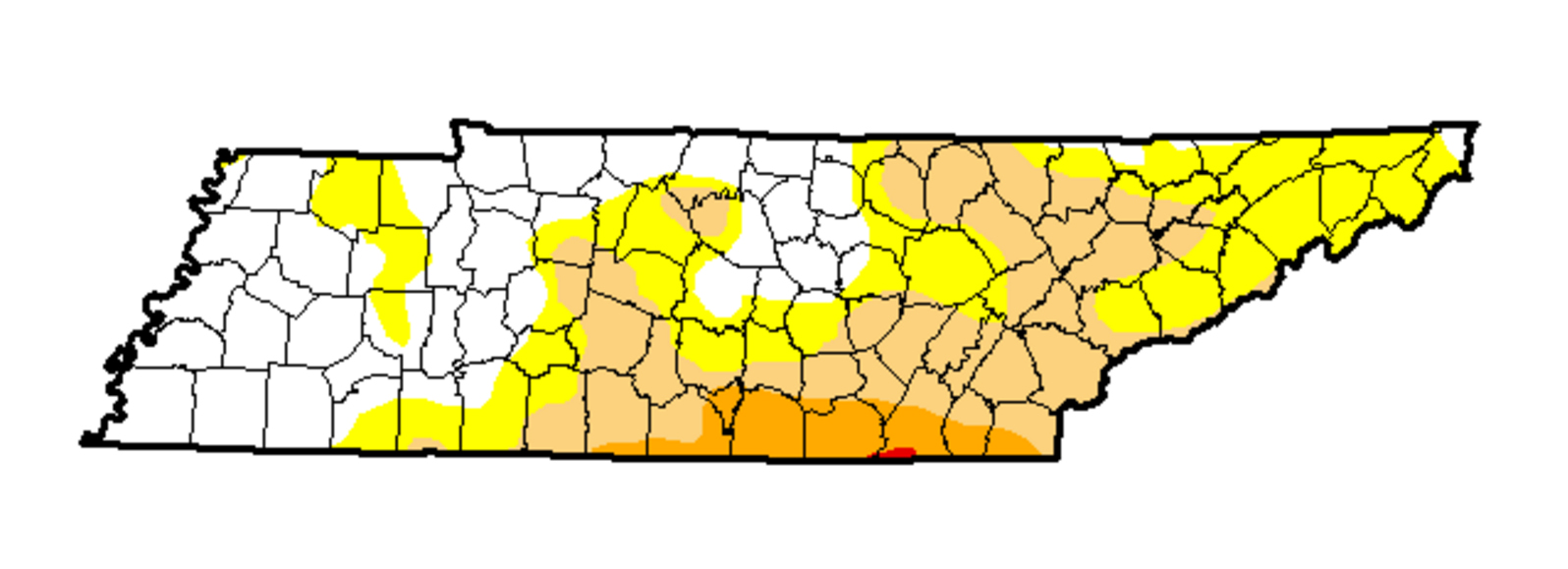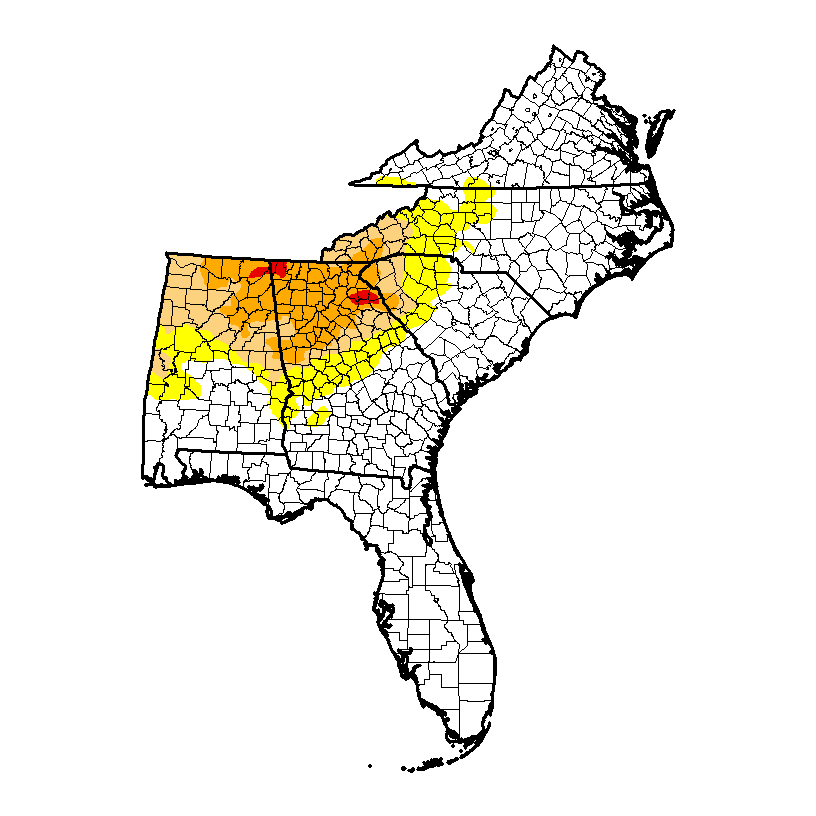For all the patriots looking to celebrate the birth of the nation with grills and things that go boom, you might want to watch the flames - swaths of the tri-state area are dry as bones.
After several months of lackluster rainfall, the National Drought Mitigation Center has officially moved the far southern portion of Hamilton County, including Chattanooga, into an extreme drought status.
As of this week a small part of Hamilton County, almost all of Georgia's Dade and Walker counties and much of Catoosa County are in extreme drought, as are areas of Jackson and DeKalb counties in Alabama.
Most of the rest of the tri-state area remains in a severe drought status, the center said in its latest update.
According to WRCB meteorologist Nick Austin, that "extreme" rating is the second-highest of five levels used to measure drought. By this time of the year, the city typically has received just under 27 inches of rain, but in 2016, Chattanooga only received about 18.5 inches.
He said the conditions could prove problematic for accidental fires, and residents should be extra careful as long as conditions remain dry, especially when air humidity drops lower than usual.
"It can definitely, on certain days, pose certain dangers for wildfires or brush fires," Austin said.
Elyse Hagner, a meteorologist with the National Weather Service in Morristown, Tenn., said Chattanooga is well below where it should be for rainfall.
"We're in a pattern of below-normal rainfall continuing to support that drought pattern," she said.
And it doesn't look like those conditions will change anytime soon.
"Over the next week, it doesn't look like we're going to get any kind of drought-busting rain," Austin said. "Nothing that's really going to put a dent in the drought."
He said the next best chance for rain actually will be July 4, when Hamilton County may see coverage across the region. But even if any rain doesn't manage to cut down the deficit too much, he said any relief would be a good thing.
"We'll take every drop we can get," Austin said.
Contact staff writer Emmett Gienapp at egienapp@timesfreepress.com or 423-757-6731.




